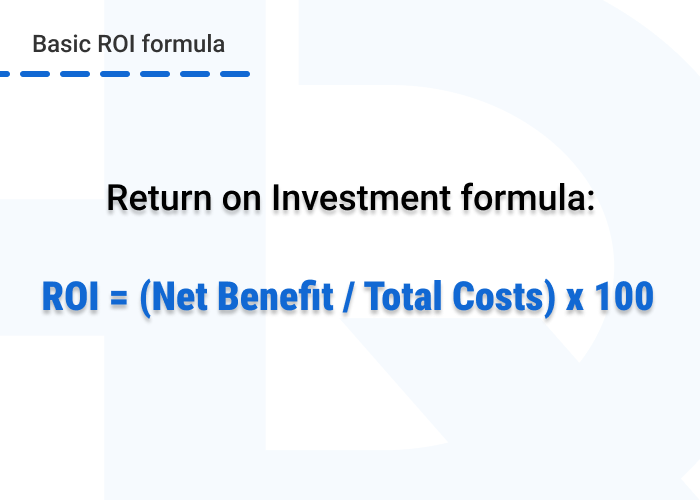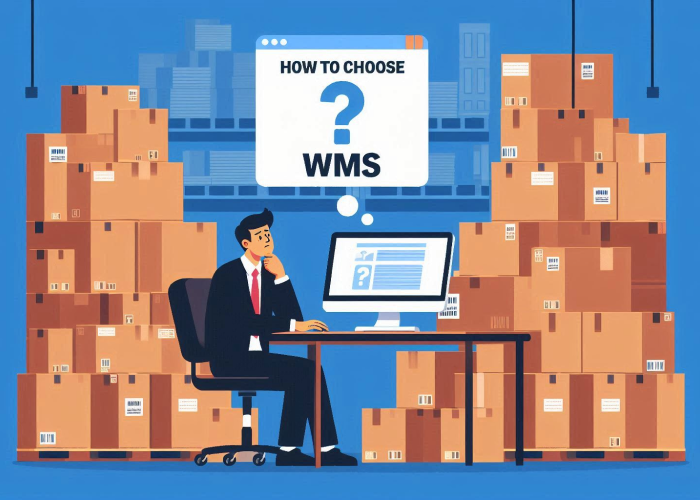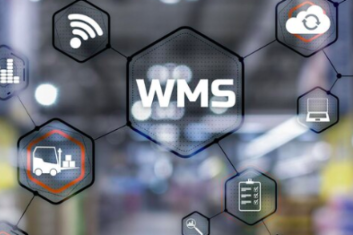Today’s market is a very competitive environment in which the work of large companies must meet three main objectives at once: high quality, speed and efficiency. Efficient business requires optimization of logistics services, one part of which is the warehouse.
A warehouse management system (WMS) allows companies to optimally and quickly process big data on goods, maintain product reporting and coordinate all the work of the storage room. But with so many options, choosing the right warehouse management system and navigating the WMS implementation process is crucial.
This article dives into how to select the best WMS for your specific needs, exploring the benefits of WMS implementation and providing a roadmap for successful integration.
How to Choose a Warehouse Management System
When it comes to selecting a WMS, several key factors must be considered to ensure you make the right choice. Here are ten crucial steps to guide you through the process:
1. Assess your current warehouse operations
The first step to selecting the best warehouse management system is to deeply analyze your current warehouse operations. This evaluation is crucial, as it provides a clear picture of your existing processes, strengths, weaknesses, and areas that need to be improved. For example:
- Evaluate your current inventory accuracy rates;
- Measure your current order fulfillment speed and accuracy;
- Analyze the efficiency of your receiving and putaway procedure;
- Evaluate your current warehouse layout and storage systems;
- Assess your labor productivity;
- Identify areas where manual processes could be automated;
- Review your current warehouse technology stack, etc.
You must also identify the challenges, obstacles and goals facing your warehouse operations. Take into account elements such as order volume, inventory turnover, and the products you work with. With this initial assessment, you will have a better understanding of which WMS features are needed to meet your specific requirements.
Need a custom software solution? We’re ready to help!HQSoftware has a team of skilled professionals ready to tackle the project. Ask me!
Natallia Rudzik
Business Development Manager
2. Define your specific requirements
Based on your operational assessment, make a detailed list of requirements for your ideal warehouse management system. It is important to consider both current needs and future growth plans.
To assess your business needs, it is useful to answer the following questions:
- What processes will you perform through the WMS?
- What improvements would you like to see in the WMS?
- What integrations do you need to connect to?
- Which functions are “must-haves” and which are optional?
3. Establish a budget
When setting a budget, consider both initial costs and ongoing expenses, such as:
- Software license fees;
- Hardware requirements;
- Implementation and training costs;
- Maintenance and support costs;
- Potential customization costs, etc.
When establishing a budget for a WMS, it is essential to calculate the potential return on investment (ROI). This calculation helps justify the cost and gives a clear picture of the long-term value of the system to your organization.
To calculate ROI, start by estimating the total cost of the system over a given period (usually 3-5 years), including all direct and indirect costs. Then project the financial benefits the WMS is expected to bring, such as reduced labor costs, improved inventory accuracy, reduced order errors, and increased throughput.

4. Research available options
Once you’ve decided on your requirements and budget, it’s time to start exploring the warehouse management systems on the market and choose the best option for you.
The following sources may be considered:
- Supplier websites and case studies;
- Trade shows and conferences;
- Recommendations from colleagues, friends, industry peers;
- Consulting firms specializing in supply chain technology.
During the research phase, evaluate the development and promotion opportunities of everyone offering WMS service. Each selected company must meet minimum requirements. But your minimum requirements may not meet the needs of tomorrow, so always consider the current state and future prospects of WMS system development.
5. Evaluate system features and functionality
Thoroughly examine the features and functionality of each shortlisted warehouse management system. Pay close attention to how well each system addresses your specific requirements.
The ease of interface for the end user is one of the most important parameters when choosing a good warehouse management system. It can take hours to weeks to learn the functionality, so the simplicity of the interface is an important indicator.
Compatibility and the ability to integrate the WMS with existing hardware and third-party programs is another important aspect when selecting a system for your warehouse. If a WMS cannot work with the software or hardware your organization uses, it can lead to significant additional costs and implementation challenges. Here are a few key points to consider:
- Software integration: Make sure the WMS can integrate with your Enterprise Resource Planning (ERP) system. This will automate data exchange, reduce errors and improve inventory management. It is important that the WMS can also integrate with Transportation Management Systems (TMS) to optimize logistics and transportation management, and with Manufacturing Execution Systems (MES) to synchronize production and warehouse operations.
- Hardware compatibility: Make sure the WMS supports your current barcode scanners, Radio Frequency Identification Devices (RFID), mobile devices and terminals. For optimal warehouse management, it is important that the WMS can integrate with conveyors and automated storage and retrieval systems (AS/RS).
- Future compatibility: A well-designed WMS should adapt to future technological advances and integrate with new hardware and software solutions. This ensures that your WMS remains scalable and supports the evolving needs of your business.
Other key areas to evaluate include:
- Inventory tracking and management tools;
- Order processing and fulfillment capabilities;
- Reporting and analytics features;
- Mobile and handheld device support;
- Customization options.
6. Research and assess vendors’ reputations
Study the history and reputation of the software developers. This point should not be bypassed, as relevant reviews will help to form an overall impression of the product they offer.
You can take advantage of software comparison platforms that can help you access independent reviews from current WMS users. These reviews can provide valuable information about a vendor’s product and the quality of their support.
You can also ask for references from previous or current customers in your industry. Talking to companies facing similar challenges can provide valuable first-hand information about the vendor’s capabilities and potential pitfalls.
Another key factor that is often overlooked is the financial health of the vendor. It’s important to examine the company’s financial situation to ensure its long-term viability, as a financially stable vendor is more likely to continue to support and develop their WMS product.
Considering custom software?HQSoftware’s team of experts can design and develop the perfect solution for your business. Let’s discuss it
Dmitry Tihonovich
Business Development Manager
7. Analyze technical support
Make sure your WMS provider ensures customer assistance when problems arise, as warehouses are complex environments prone to unexpected issues. A reliable WMS provider offers solid customer support so you have the resources to troubleshoot issues quickly, minimize downtime and keep your warehouse running smoothly.
When examining the quality of customer support, you should pay attention to the following aspects:
- Hours and availability of support (24/7, only during business hours);
- Availability of multiple support channels (phone, email, chat);
- Availability of account managers or support teams.
Remember, a vendor with excellent support can significantly impact the success of your WMS implementation and ongoing operations.
8. Request and evaluate proposals
Having identified potential WMS vendors that align with your needs, the next step is to request information from companies providing WMS solutions that meet the available criteria.
You can gather detailed information through concise Request for Information (RFI) documents. Ideally, these documents should be a few pages long, ensuring a focused exchange of crucial details.
In this document, describe:
- Your business;
- Its planned direction;
- Your warehouse;
- Your plans for growth;
- What goals you want to achieve as a result of implementing a WMS.
Once you have received proposals from WMS vendors, it’s time to evaluate them. Pay particular attention to the following aspects:
- User interface: How intuitive and user-friendly is the system’s interface for your employees?
- Functionality: Does the WMS meet your current and future needs?
- Compatibility: How well does the system integrate with your existing hardware and software?
- Flexibility and scalability: Can the system adapt to changes in your business?
- Support and maintenance: What support and maintenance services do vendors offer, and how reliable are they?
- Cost: Does the offering include all the components and services you need, and does it fit your budget?
- Reputation: What are other customers’ reviews of the system and the vendor’s reputation in the marketplace?
9. Conduct pilot testing
Pilot testing is a crucial step before fully implementing a new warehouse management system, for several reasons:
- You can uncover gaps in functionality: A pilot project allows you to test your WMS on real data and workflows. This will identify areas where the system does not meet your requirements. It may also turn out that the system is missing functionality that you had in mind.
- You can identify user issues: It is important to involve warehouse staff in the pilot project. They will help identify usability issues. This will ensure a smoother transition once the system is fully deployed.
- You can refine the implementation strategy: Pilot testing allows you to identify any issues you may encounter in a full implementation. This will allow you to refine your training plan and data migration strategy, and identify additional resources needed.
10. Make your final decision
Are you ready to make a final decision? Take your time, because there is one more important aspect to consider. We recommend conducting due diligence on the vendor. Review all legal documents as well as the responsibilities and rights associated with each vendor and the use of that vendor’s solution.
The final decision is largely based on the results of the contractor review. If any legal issue arises during this review, it is better to choose a different solution. However, some legal issues do not necessarily require rejection of a particular candidate, especially if the return on investment is significantly higher.
Always remember that the choice of WMS and vendor should be approached rationally: do not be too sparing of your time; discuss your product in detail with potential vendors.

How HQSoftware Can Help with WMS Implementation
When it comes to implementing a WMS, partnering with an experienced technology provider like HQSoftware can greatly simplify the process and ensure optimal results. The extensive knowledge we have accumulated since 2001 is actively applied in our WMS projects.
HQSoftware offers a wide range of services to meet the unique needs of companies looking to improve their warehouse operations. Our expertise begins with WMS consulting, where we work closely with clients, listen to their needs, select the most appropriate technologies and create a detailed roadmap for project development. We believe that this strategic planning helps to efficiently allocate available resources and build a solid foundation for successful implementation.
For companies with existing WMS software that no longer meets their needs, HQSoftware offers system modernization services. Our team of experienced professionals can update and enhance your current system to meet changing business requirements, improving functionality and performance without the need for a complete rebuild.
HQSoftware also provides end-to-end WMS development services. Our team of qualified specialists performs the full cycle of WMS development, while minimizing the customer’s labor costs.
Our team consists mainly of mid/senior specialists with 4+ years of experience. For your solution, we select experts who have already worked with projects in your field and have practical experience to solve possible problems. During our cooperation, you can easily increase or decrease the size of the development team depending on the scope of work.
For assistance in selecting a warehouse management system or developing a custom WMS solution, please contact us.

HQSoftware Founder
Having founded the company in 2001, uses his broad knowledge to drive the company forward. Ready to share his wisdom on software development and technology insights
Related Post
View All
We are open to seeing your business needs and determining the best solution. Complete this form, and receive a free personalized proposal from your dedicated manager.

Sergei Vardomatski
Founder








